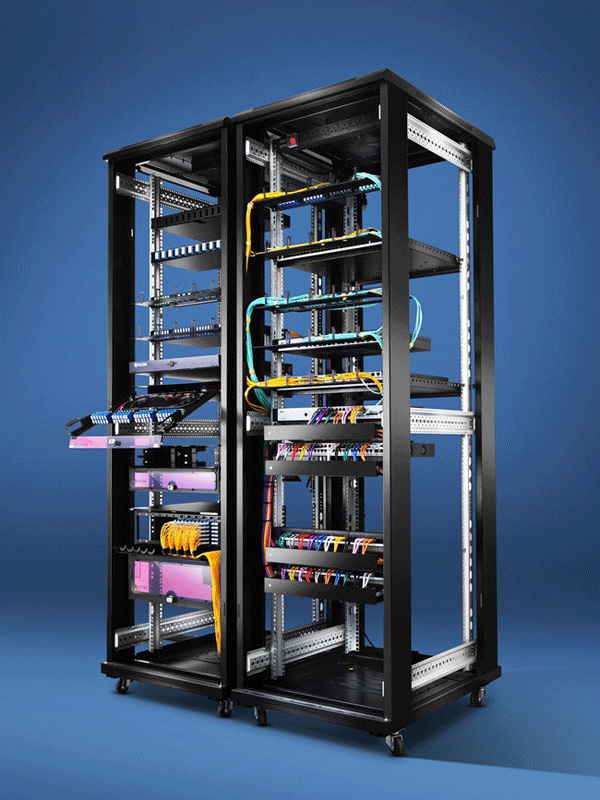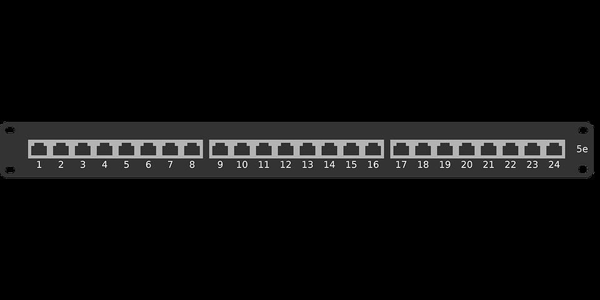A patch panel is an effective and flexible
network device that can keep your data center or server room in order and make
it easier to move, add, or change cabling infrastructure in the future. If you
want to set up a wired network with multiple wall ports in each room, a
centrally located patch panel can provide a simple, tidy, and easy-to-manage
solution. A patch panel is essentially a set of ports on a panel. Each port is
connected to another port located elsewhere in the building through a patch
cable. Patch panels are usually used in enterprise networks, but they are
rarely used in home networks.

What is a Patch Panel Used For?
A patch panel can connect various devices
together. To arrange circuits using a patch panel, you simply plug and unplug
the appropriate patch cords. Patch panels can simplify
troubleshooting because they provide a location for all input jacks. Each port
in the patch panel is connected to a different device somewhere in the
facility. Each panel bundles all connections together in order to connect to
another network. This is usually the way the LAN connects to the WAN or
Internet.
Patch Panel Types
There are two types of patch panels, fiber optic
panels and Ethernet patch panels. Under fiber optic panels, there are LC fiber patch
panel and SC fiber patch panel. While under Ethernet patch panel, there are Cat5e
patch panel and Cat6 patch panel.
Fiber Optic Panels
Standard Fiber Patch Panel
Standard fiber optic patch panel can be loaded
with LC/SC/MTP adapters, which are commonly used as the intermediate connection
between the backbones and patch cables.

Blank Fiber Patch Panel and SC Patch Panel
Blank Patch Panel
The 1U blank panel fits all 19 inch standard
server rack and cabinets. The panel is made of metal material, which helps to
ensure excellent thermal insulation performance. It is an ideal tool for
improving airflow in the rack by covering unused space.
Ethernet Patch Panels
Cat5e/Cat6 Patch Panel
Cat5e/Cat6 Patch Panel is designed for both
shielded and unshielded copper cables like Cat5e, Cat6 and Cat6a Ethernet
cables. The Cat5e/Cat6 Ethernet patch panels come with the feed-through and
punch-down designs.
Optical fiber distribution box is an interface device used to connect
the feeder cable and the distribution cable, they often use in outdoor,
corridor, indoor environment. It is widely applied in FTTH fiber optic
networks. Optical distribution box is usually 24 or 48 port, and some are
designed with 12, 16 ports for the small business or villa application, they
mostly are wall mount, while pole mount is an option.

Cat5e Patch Panel
Advantages
of Patch Panels
Flexibility
If you need to change something or there are
something breaks; you won’t need to re-run an entire length of cable.
Easier
Maintenance
It allows all cables to be managed in a cleaner
and more organized way. Each individual port on the patch panel can be marked, which
makes it easier to identify another connected device, which is especially
useful when troubleshooting problems.
Reduce Cable Clutter
Patch panels are typically located closer to the
actual equipment. This makes it possible to use a shorter patch cable.
Conclusion
Patch panels are a fundamental piece of
networking equipment. In a business environment, patch panels are the smart way
to quickly transfer communications lines from office to another.
Baudcom offers all
kinds of patch panels. For more information about patch panels, please
visit Baudcom.